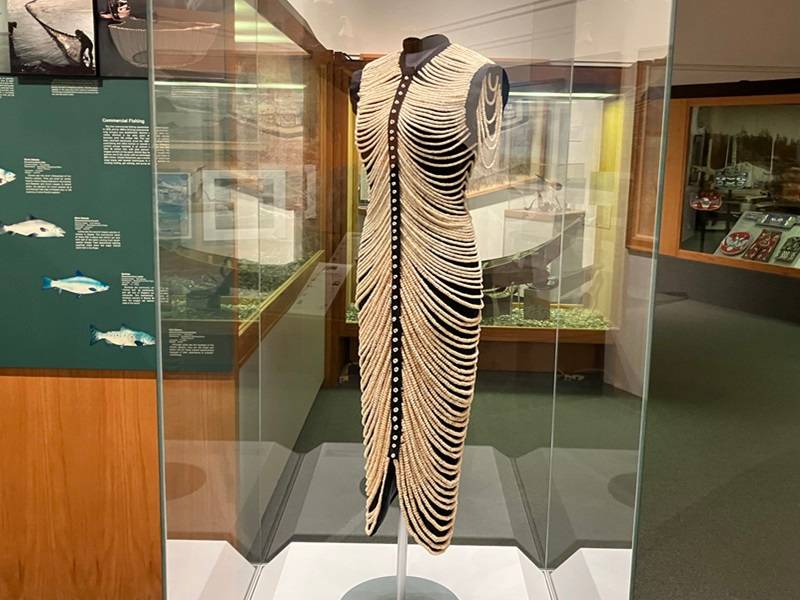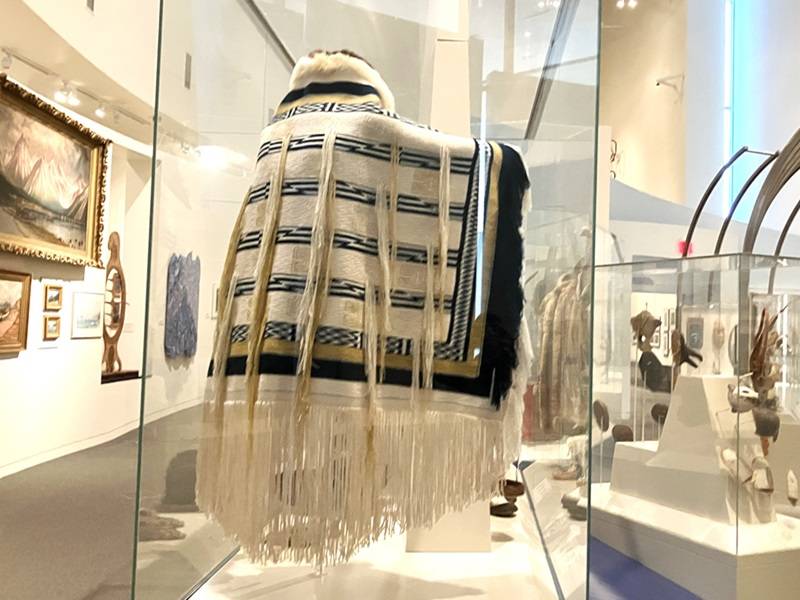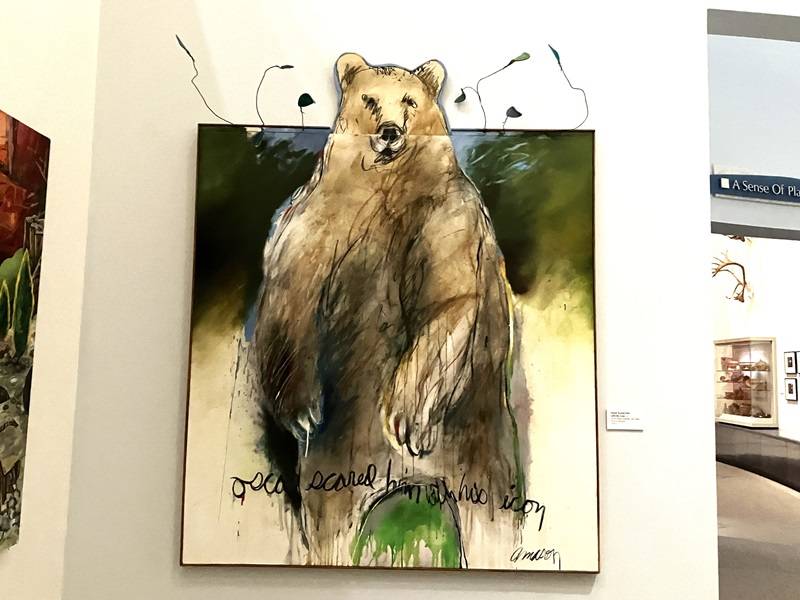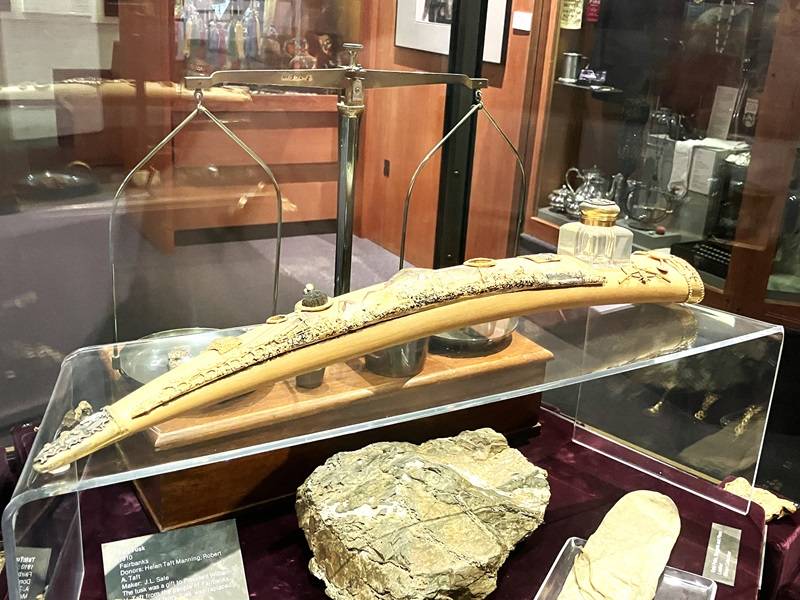Object Stories
Discover the stories behind some of the objects on display at the museum!
Taft Tusk
EH:0267-4176
Fairbanks residents presented this desk set to President William Howard Taft as a
gift in 1910. It consisted of a ivory tusk decorated with gold figurines of mountains,
animals, and mining activities. After Taft's death, his children donated the tusk
to the museum, where it went on display in 1944. In 1969, the tusk was stolen; police
later recovered the gold figurines, but not the tusk. Artist Glen Simpson carved a
replacement tusk from walnut, and the piece went back on display in 1973. Today it
is the centerpiece of the gold case in the Gallery of Alaska.
Read more about the history of the Taft Tusk.
20,000 Bones Under the Sea
by Cynthia Gibson
UA2017-017-0001

Sitka artist Cynthia Gibson spent four years creating a dress from over 20,000 salmon
vertebrae. She collected the salmon bones, then sorted, sanded, cleaned, bleached,
and finally threaded them together. The finished dress was first worn at the Sitka
Wearable Arts Show, then purchased by the Museum of the North (with the support of
the Rasmuson Foundation Art Acquisition Grant and Museums Alaska). It is now on display
in the Gallery of Alaska.
The dress is a compelling interpretation of the importance of salmon to the state, as well as communicating a clear sense of place in Southeast Alaska. Gibson says "To my surprise, the dress ended up creating a bridge between art and community. "
Read more about the dress and see pictures of its creation:
Raven's Tail Robe: Ice Walker
by Teri Rofkar
UA2005-016-0001

Grace Schaible, a longtime museum supporter, commissioned her friend Teri Rofkar
to weave a Raven's Tail robe to reflect her passion for polar bears. Rofkar, a Tlingit
master weaver, spent two years and over a thousand hours weaving the robe. It follows
the form of traditional Raven's Tail weaving, but the colors and patterns reflect
the relationship between Schaible and Rofkar.
Raven's Tail weaving is an older weaving tradition from the Tlingit, Haida, and Tshimshian cultures. It almost went extinct in the 1800s, but contemporary weavers, including Rofkar, started to revive the art in the 1990s.
For years, whenever Rofkar would visit the museum, she would look at the Ice Walker robe and say, “We really need to dance that robe!” According to Tlingit tradition, a ceremonial robe is not alive until it is danced. In March 2015, the robe was worn on stage by a traditional dancer during the UAF Festival of Native Arts, finally giving it the life and power it deserves.
The robe is now on display in the Rose Berry Alaska Art Gallery.
Watch a video of Teri Rofkar weaving the Ice Walker robe. (Video courtesy of Roger Topp.)
Watch a video of the robe being danced on stage in 2015. (Video courtesy of Mareca Guthrie.)
Oscar Scared Him with His Icon
by Alvin Amason
UA1985-3-1

Sugpiaq artist Alvin Amason was inspired to create this painting after an experience he had fishing on Kodiak Island. A local man named Oscar scared off a bear, and claimed it was because of the Russian icon he was wearing. Amason then painted an artwork showing a large brown bear, and titled it Oscar Scared Him with His Icon. The painting is now on display at in the Rose Berry Alaska Art Gallery.
Listen to Alvin Amason tell the story behind this painting.

